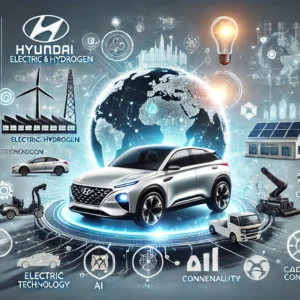A Leap in Energy Density: A Global Collaboration Triumph
In a groundbreaking development, a collaborative research effort involving the Korea Advanced Institute of Science and Technology (KAIST), Ulsan National Institute of Science and Technology (UNIST), and McGill University in Canada has led to a significant advancement in lithium-ion battery technology. This new generation of batteries enhances both the energy density and the affordability of energy storage solutions, marking a major milestone in the industry.
The Innovative DRX Cathode Material: Pioneering a Sustainable Future
The core innovation lies in the DRX (disordered rock salt) cathode materials, which utilize manganese-based compounds rather than the traditionally used nickel and cobalt. This shift not only reduces costs but also leverages more abundant and less environmentally damaging materials. The new DRX cathode achieves a remarkable 40% increase in energy density compared to conventional lithium-ion batteries, offering a substantial improvement in performance.
Overcoming Challenges: Enhancing Electrode Efficiency
Despite the high potential of DRX cathode materials, earlier versions faced limitations, such as rapid degradation when used at high concentrations in batteries. The research team addressed this by integrating multi-walled carbon nanotubes in the electrode manufacturing process, which significantly enhanced the electrical conductivity and stability of the batteries. This breakthrough allows the electrodes to maintain a higher proportion of active material, achieving unprecedented energy densities of approximately 1050 Wh/kg.
Implications for Global Competitiveness and Resource Independence
Professor Seo Dong-hwa from KAIST highlighted the strategic importance of this development amid growing global reliance on specific minerals such as nickel and cobalt, which are predominantly sourced from politically sensitive regions like China. This innovation not only promises to reduce such dependencies but also positions Korean enterprises at the forefront of the emerging market for high-performance, cost-effective energy storage solutions.
Toward Commercialization: Navigating Future Challenges

While the path to commercialization involves further challenges, the potential impact on the battery market is immense. This advancement could significantly shift the competitive landscape, empowering companies to offer superior products without the constraints imposed by scarce resources.
Revolutionizing Battery Technology: Cobalt and Nickel-Free Lithium-Ion Batteries
This collaborative research initiative represents a pivotal step forward in battery technology, with the potential to transform energy storage solutions globally. As we move towards a more sustainable and economically viable energy future, the implications of such innovations extend beyond mere technical achievements—they offer a beacon of hope for a cleaner, more sustainable world.










